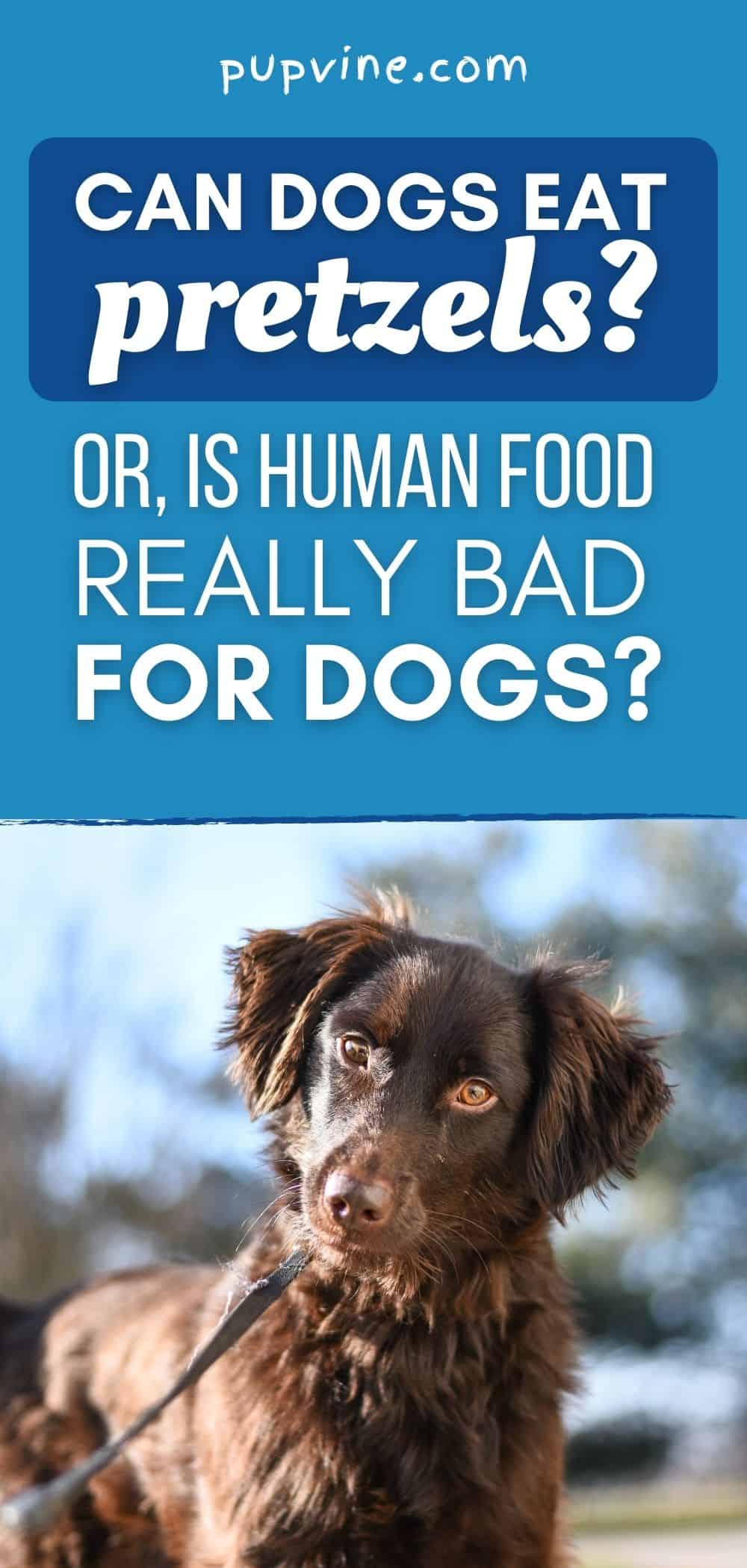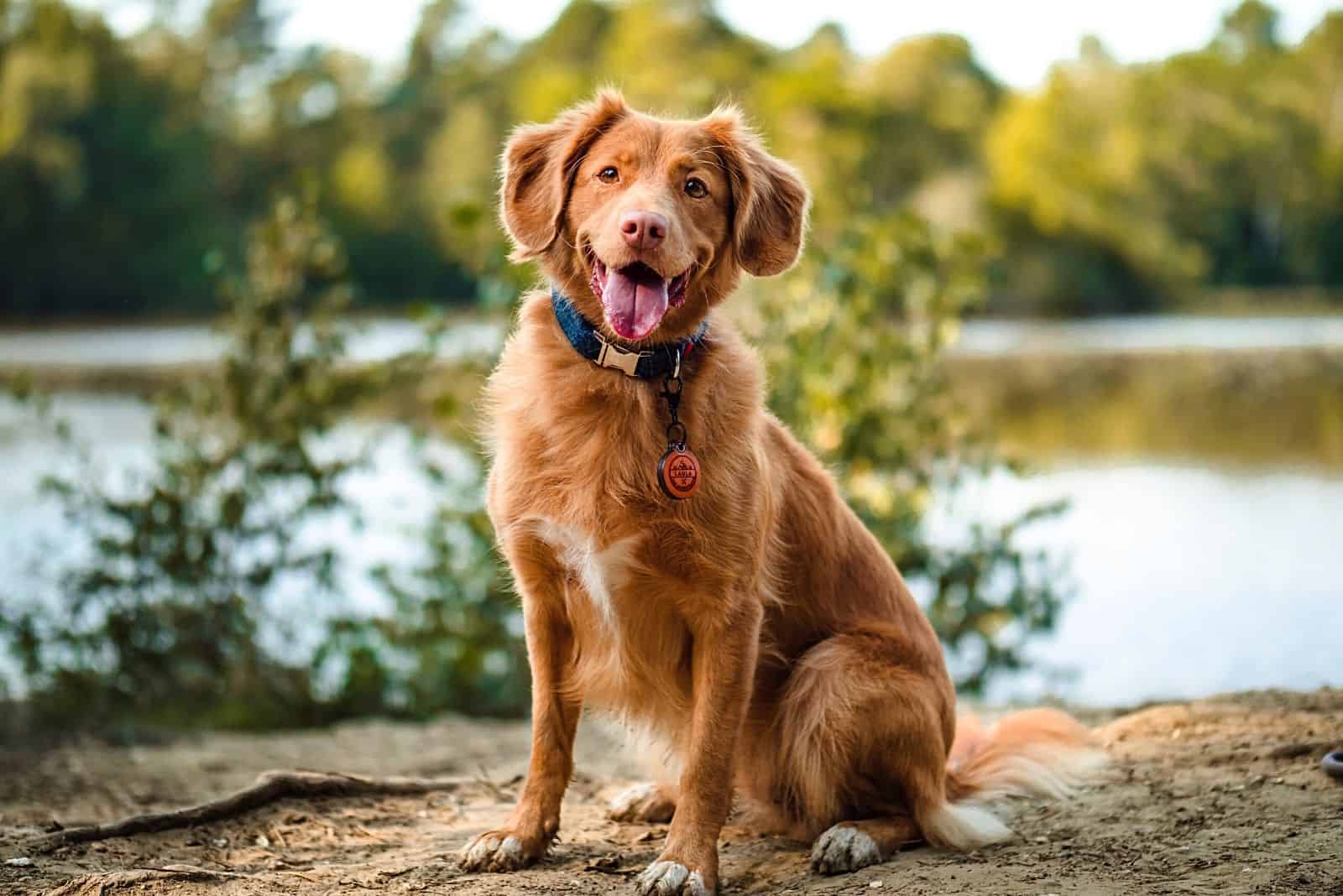Sometimes considered the ‘ultimate snack’, pretzels come in a whole range of different shapes, sizes, and flavors these days.
Though they originate from Germany, no one really knows who first invented this snack food (though various claims are made about this!), which, although popular across much of the world, it has become a firm favorite in the USA, particularly in areas with a large number of German speakers.
Reports show that around 180 million people ate pretzels of one kind or another in America in 2020!
And, seeing as there are nearly 77 million dogs in the USA, you can be sure that some dog owners, at one time or another, across the country have wondered, can dogs eat pretzels?
We’ll find the answer to this question by taking this snack apart to see what dangers might be hidden inside that could pose a threat to our furry companions.
What is a pretzel, actually?

The classic pretzel shape is familiar to most people, often used as a symbol for a bakers right across Europe, especially around the Austria/Bavaria region.
In its most basic form, it’s a baked pastry made into the shape of a knot by entwining long strips of dough. The thing that sets traditional pretzels apart is the use of lye (caustic soda) or washing soda in the baking process.
If this sounds a bit scary, don’t be too alarmed; provided the solution is watered down properly – to a 4% solution or lower – it reacts whilst in the oven to make the chemicals harmless, forming the familiar taste, the chewy crust, and the brown sheen we know and love.
Over time, the large knot-shaped loaves have been adapted to modern tastes, and to save time and money, they are more likely to be made in a factory than in a traditional bakery.
This applies more to the small, hard variety that is probably the most popular and most recognizable form.
The larger, soft pretzel is more like your normal loaf of bread and can be eaten with many other types of food, such as peanut butter or brown mustard.
While they’re not exactly thought of as a ‘healthy snack food’ (no surprises there!), they don’t contain as many calories as fried snacks like potato chips.
As long as you are careful, they shouldn’t cause humans any health issues if they are part of a balanced diet.
But, what about man’s best friend? Will eating this type of human food make them ill?
The dangers of salt poisoning
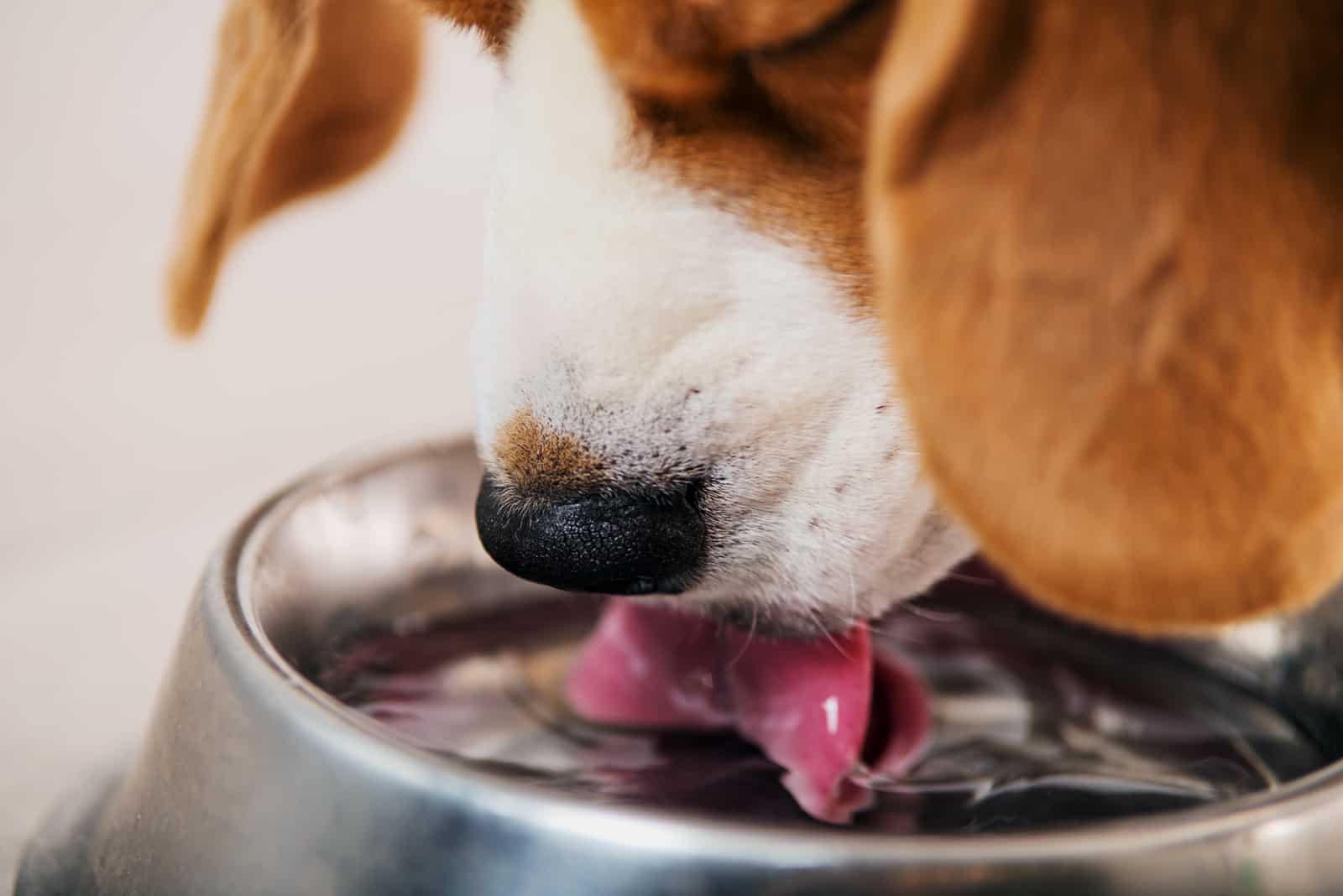
Though our bodies need salt for them to work properly, if we have too much in our diet, it will cause a whole range of health problems. The same goes for our furry friends.
In fact, salt poisoning is a real worry when it comes to a dog’s health. A lot of pretzel brands, mostly the small, hard variety, are covered in salt, which is the main factor when asking whether dogs can eat pretzels.
Most dog lovers know that their beloved pooch can be a rascal at times, sneaking human food that always seems to be more tempting than their own.
The trouble is, a lot of processed foods contain high levels of salt. If your pet manages to break into a pack of chips and wolf down the whole lot, you shouldn’t worry too much.
Once in a while, a bit of salt won’t do any harm, though you might notice that they become thirsty and need to be let out to urinate more.
Make sure they have plenty of fresh water on hand and that they are able to relieve themselves when necessary.
The real problem starts when a high amount of salt is consumed in a short space of time, especially if the dog doesn’t have ready access to water.
If this happens, the cells within the dog’s body will start to release water to try and balance out the salt levels. This causes the cells to break down, usually starting in the brain, which can have very nasty results and can even be fatal.
Here are some symptoms to watch out for if you suspect your dog has salt poisoning:
• Shaking or moving jerkily – high sodium (salt) levels in the blood causes the muscles to stiffen and shrink, which makes it difficult for the dog to control them. They may even go into spasm and convulsions.
• Excessive thirst – your dog will be constantly at the water bowl and looking elsewhere (the lavatory is a favorite, as most of us know!) if this source runs out. As a result, there will be a highly increased rate of urination.
• Disorientation – the brain is the place that is most affected by large amounts of salt. Your poor pooch may walk unsteadily, as if intoxicated. They will seem confused and distressed.
• Problems with the digestive system – you might notice a lack of appetite as they could be suffering from nausea, stomach pain, vomiting, and watery diarrhea.
Aside from these, your dog may become feverish, weak, and have no energy. And, as things worsen, your dog could experience breathing problems and an increased heart rate.
If these symptoms aren’t treated urgently, then the dog may fall into a coma and even die.
It is vital to get your dog checked out by a veterinarian so that the exact cause can be discovered and treated. Other conditions, such as pancreatitis, often present similar symptoms, but would need to be treated differently.
What about other ingredients?

Most salty snacks don’t contain much in the way of nutritional value, but, as mentioned above, if we limit how much we eat, then there’s no cause for concern.
As dog owners, we often make the mistake of assuming that our furry friends are able to eat ‘people food’ without any ill effects.
The trouble is, a lot of things that we eat can be harmful or even fatal to dogs. Some of these foods are foods that you would never have dreamed of as being dangerous.
When it comes to pretzels, over the years, the companies that make them have invented a massive variety of different flavor combinations, adding all sorts of interesting things to get us to buy something new.
While we might love these treats, and think we are being kind by giving in to those big eyes and drooling by throwing tidbits to our pampered pooch, the truth is that we could be harming their health in the long term.
Onion powder

Photo from: @koda__samoyed
We’ve looked at the problems with salted pretzels, but even unsalted snacks may contain ingredients, such as onion powder.
Dogs really can’t handle anything from the allium family (onions, garlic, shallots, and so on).
Though these are okay in very small doses, it’s best to avoid feeding these to dogs if possible, as it could have a nasty effect on their digestive system.
Chocolate

Sweet pretzels are bad news for dogs, too, especially those dripping in chocolate. By now, most dog owners are aware of the dangers of chocolate. But, just in case you’ve not heard, let’s make the point again; Chocolate is bad for dogs.
Aside from the sugar content, chocolate contains a chemical called theobromine. Dogs can’t process this chemical in their stomachs, which leads to symptoms much like we see in salt poisoning.
Although it can be treated, a lot depends on how much chocolate has been consumed, whether it was dark or milk chocolate, and the size of the dog.
Most veterinarians and canine experts will agree, though, that there is no safe amount of chocolate for dogs.
Sugar
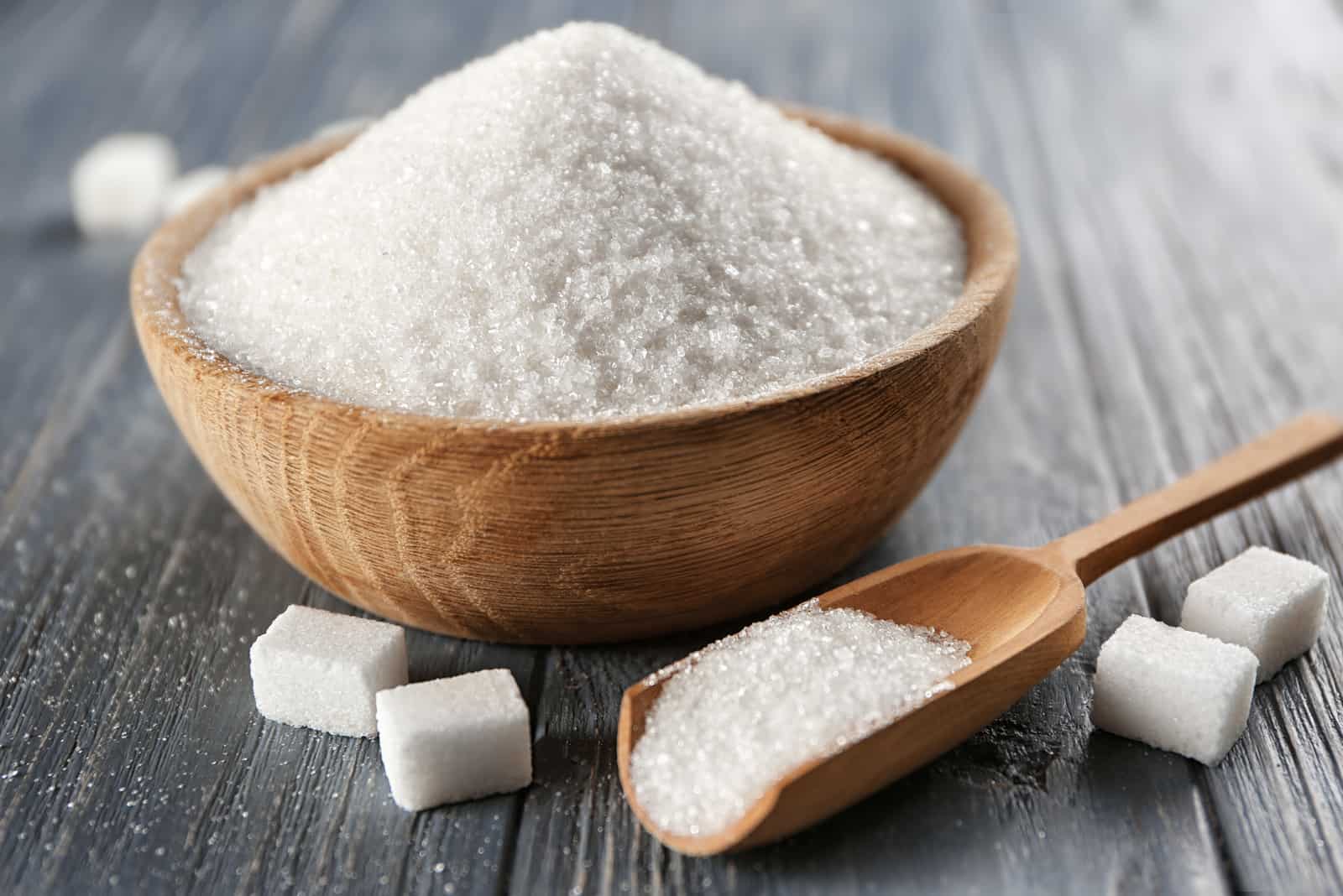
Though sugar is not toxic to dogs, they can develop a sweet tooth just like us. Sadly, they are even more at risk of the harmful effects as we are. Dental cavities, diabetes, obesity, and arthritis are all real problems that could result from your dog eating too much sugar.
Like us, they need carbohydrates for their bodies to work properly. These carbs are broken down into glucose and sugar, which is where they get all that energy from.
High levels of sugar will cause inflammation right through the body, which will be very uncomfortable.
Blood sugar levels will be affected, too, possibly leading to the blood vessels that supply the vital organs being damaged.
Kidney disease, heart disease, eyesight problems, and stroke are all health problems related to high blood sugar levels in dogs.
Sweeteners
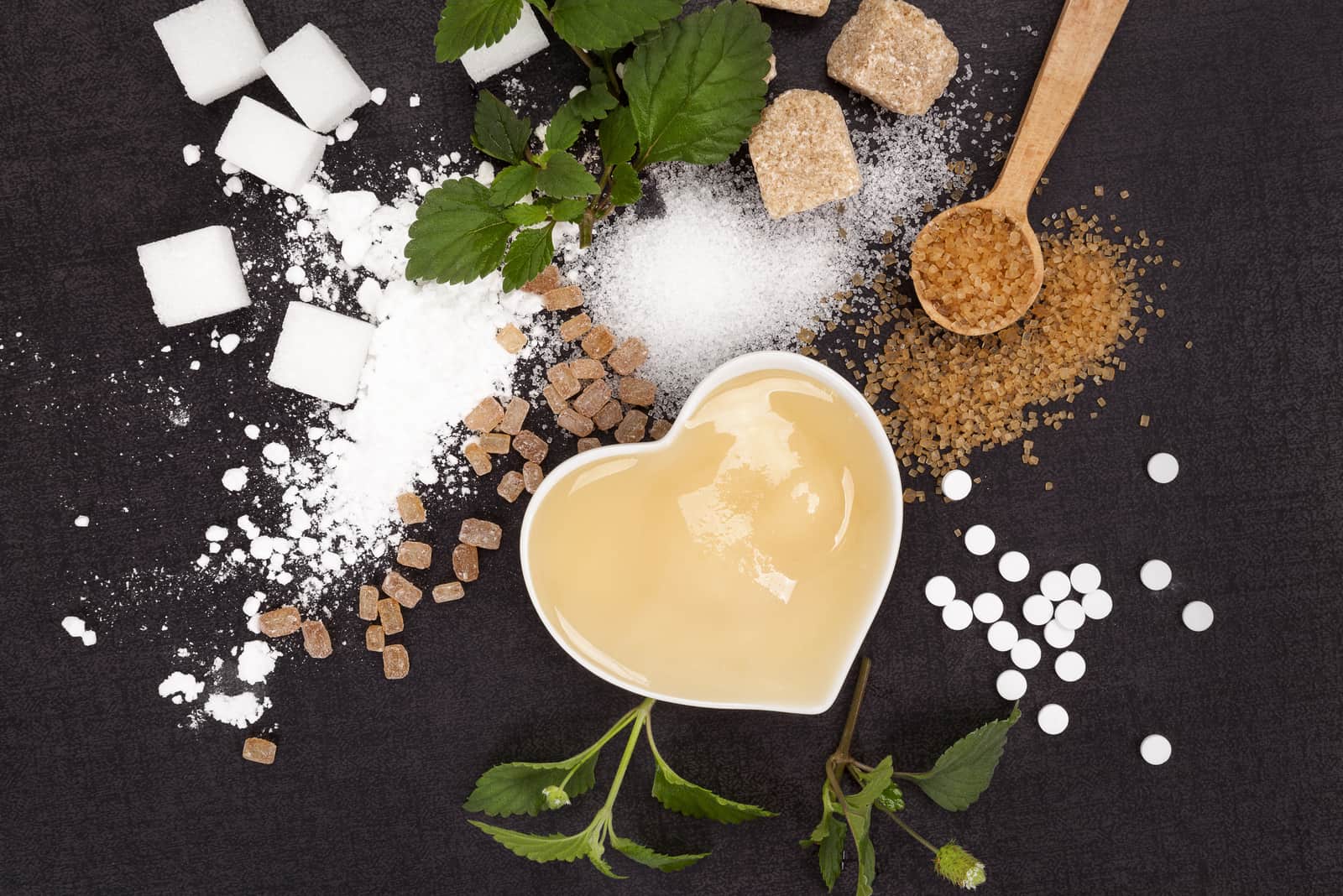
One artificial sweetener to leave out of your dog’s diet at all costs is xylitol. This is added to foods to reduce sugar intake, but is extremely harmful to dogs.
It is found in baked goods, gum, diet foods, toothpaste, and so on. Even if it is not present in the pretzel itself, it could be found in the filling, as is the case with some brands of peanut butter.
Other hazardous ingredients to watch out for are raisins, grapes, and grape juice, which could lead to kidney failure and death. Likewise, avocados, which might be used to make a dip for your pretzels.
As healthy as they are for us, we can cope with persin, a toxin that is made by the avocado plant to prevent certain fungi from forming.
Persin is toxic to dogs, and it causes diarrhea and digestive problems.
Though some sources play down the risk by stating that the highest risk of illness comes from the dog eating the avocado stone (or pit) or even leaves of a growing plant, others claim that if a dog consumes enough of this toxin, death could occur within 12 hours.
Perhaps it would be best to be cautious!
Nuts
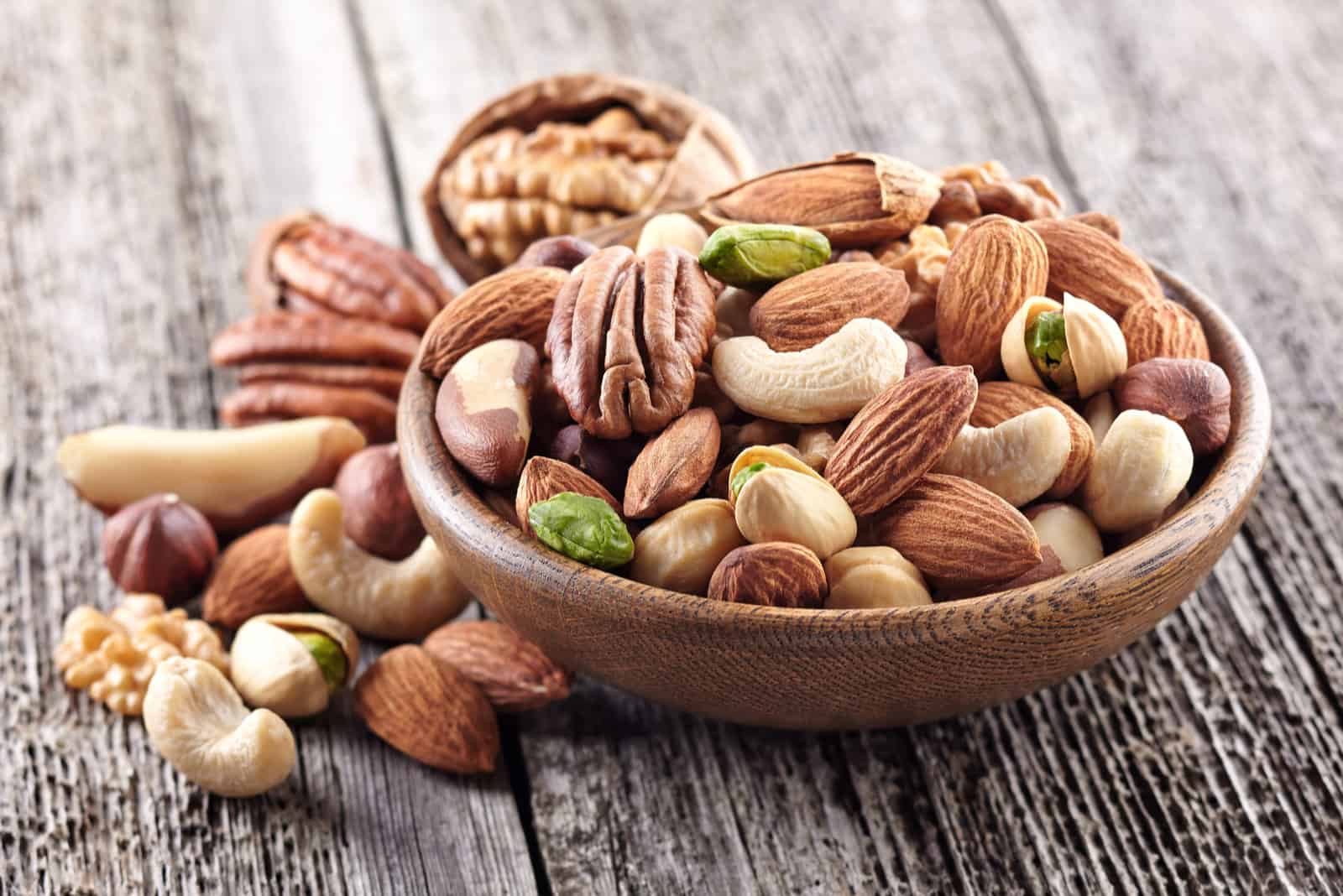
Chopped, mixed nuts make a tasty addition to sweetened pretzels. However, aside from the obvious concern about sugar or sweeteners, it isn’t a good idea to feed these to your dog.
Nuts are high in fat, which humans can cope with. Too much fat in a dog’s diet could cause problems like pancreatitis, as mentioned above, due to obesity.
Even worse, macadamia nuts are highly toxic to dogs. Tests have shown that consuming 2.4g per kilogram of body weight of macadamia nuts will produce symptoms like muscle weakness, high temperature, vomiting, trembling, and walking unsteadily (ataxia).
As with avocados, it might be better to be safe than sorry and avoid giving your dog anything containing nuts.
Other things to watch out for
Some dogs have allergies, often related to proteins in things like beef, chicken, eggs, dairy products, and gluten, which is present in wheat.
If you are worried about allergies, your veterinarian should be able to perform a test known as the RAST (Radioallergosorbent Test), or an elimination test (a special eight- or 12-week diet of hypoallergenic) to discover what allergies, if any, they have.
The main signs of allergy are digestive problems, such as vomiting or diarrhea, or itchy skin. Dogs can also lose weight and/or become hyperactive or aggressive.
Conclusion
So, can dogs eat pretzels?
We promised to answer this question, and the points raised above prove that there are real risks involved in feeding your dog pretzels. It’s always best to seek veterinary advice about your dog’s diet.
After all, they’re just not built to eat human food, however much they beg.
A few unsalted pretzels here and there won’t harm them, but it should never become a regular habit.
In fact, salty foods on the whole should be avoided as much as possible, with healthy treats taking their place.
As we noted, ingredients should be checked for high levels of sugar or certain types of sweeteners, such as xylitol.
The best and healthiest diet for your pet will be their regular dog food, with occasional treats.
Of course, it goes without saying that you want the best for your dog’s health, so why risk it by feeding them things that could compromise this? They’ll thank you for it in the long run.
Read Next: Why My Dog Won’t Eat His Food But Will Eat Treats?
